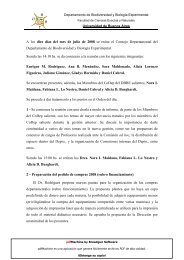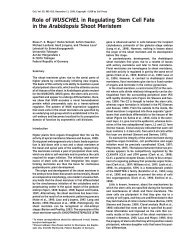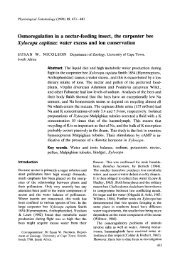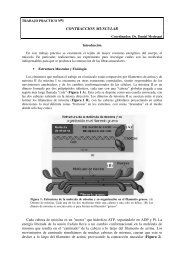The Aerobiology Pathway
The Aerobiology Pathway
The Aerobiology Pathway
Create successful ePaper yourself
Turn your PDF publications into a flip-book with our unique Google optimized e-Paper software.
Figure 2.6<br />
Pollen calendar showing<br />
periods when the<br />
pollen of different<br />
temperate wind-pollinated<br />
plants is likely to<br />
be in the air in<br />
Scotland. (Caulton et<br />
al., 1997, with permission<br />
from <strong>The</strong> Scottish<br />
Centre for Pollen<br />
Studies, Edinburgh).<br />
ding pollinosis, seasonal rhinitis and asthma. City dwellers spend the major part of their<br />
lives indoors working, at leisure, eating and sleeping. Public transport, schools, offices,<br />
hospitals, restaurants, libraries, community and leisure centres can all harbour pollen,<br />
fungal spores, bacteria, house dust mites, dander and other biological agents (Ranito-<br />
Lehtimaki, 1991; Reponen, 1994; Verhoeff, 1994; Nikkels et al., 1996; Garrett et al.,<br />
1997; Stern et al., 1999 and Flannigan et al., 2001).<br />
Allergic response to allergenic pollens (Pollinosis) is not confined to humans, but also<br />
occurs in animals. Studies have been undertaken in horses (Dixen et al., 1992) and dogs<br />
(Fraser et al., 2001) to identify causes of pollenosis. <strong>The</strong> methodology of these veterinary<br />
studies followed that described by Caulton (1988).<br />
26 THE AIR SPORA



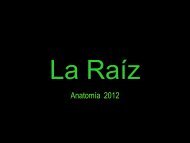
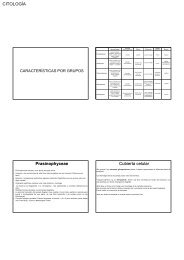


![Estructuras secretoras internas [4.64 MB]](https://img.yumpu.com/14294979/1/190x143/estructuras-secretoras-internas-464-mb.jpg?quality=85)
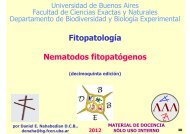
![anatomía y exomorfología [7.14 MB]](https://img.yumpu.com/12744163/1/190x143/anatomia-y-exomorfologia-714-mb.jpg?quality=85)
